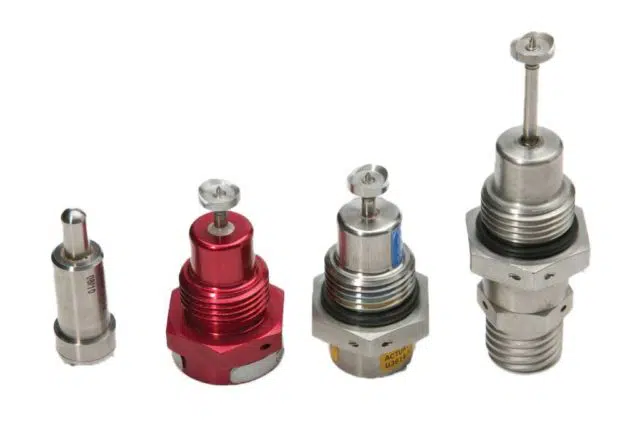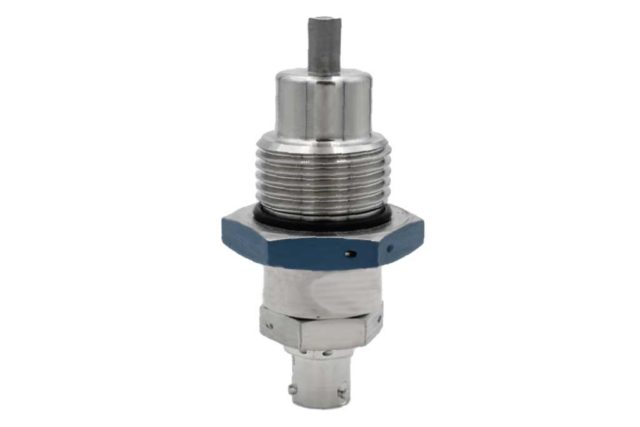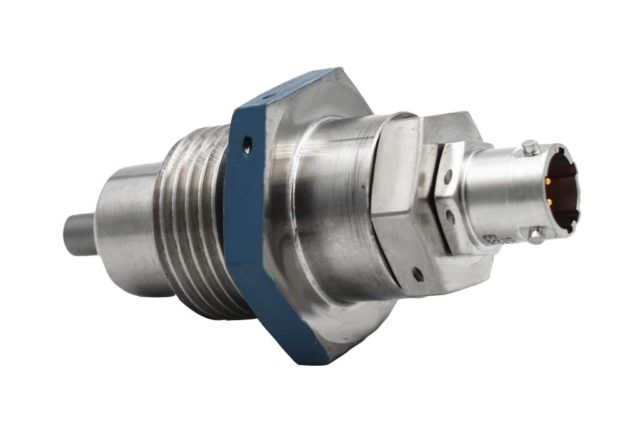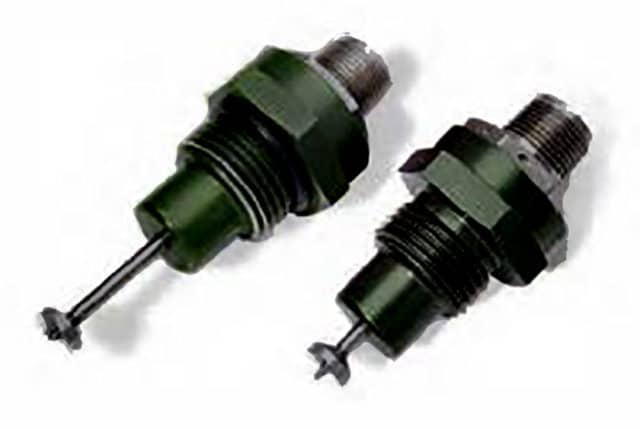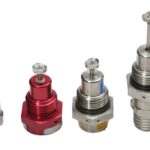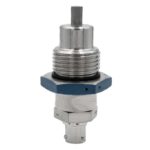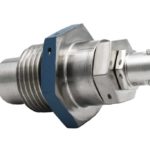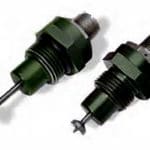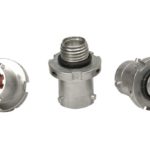Pyrotechnic Actuator
A pyrotechnic actuator can pierce a pressurized vessel, eject flares, unlatch devices, remove devices and push mechanical devices from point A to point B. Achieve your mission-critical goal through an active stroke of an internal rod or piston to induce or control the desired motion. As an innovator in the motion control sector, we have led application advancement to initiate devices by any number of methods.
The power for such devices is provided by pressure cartridges or gas generators. Pressure produced by the cartridge drives a piston creating mechanical motion. Pyrotechnic actuators are used for opening pressure vessels, ejecting flares, unlatching and any other operation where a high energy, relatively short duration, mechanical motion is required.
These powerful stroking devices are designed to pack a lot of punch! Piston Actuators can be initiated electrically with a bridge wire device, or with a FCDCA. Upon initiation, pressure is created causing a piston to stroke. These devices are designed to provide an impulse for a variety of applications both large and small, such as vehicle stage and fairing separation push off, rupturing diaphragms, releasing locking pins, activating latch releases, or activating batteries. Full function typically occurs in milliseconds from the input of the firing signal.
Key Features
How a Pyrotechnic Actuator Works
The rate of a desired push can be within a few milliseconds, to much longer times, depending on the need. The pistons can be designed to lock out once fired. A Piston Actuator retains all explosive hot gasses with the use of various elastomeric seals. A piston actuator can be actuated by an electrical explosive device and pyrotechnic actuators may also be actuated with a pressure cartridge, mechanical primer initiated device, linear detonation transfer line (SMDC, FCDC, ETL, RDC) or a laser actuated ordnance device (laser initiated squib or detonator).
The gas energy from any of these devices expands rapidly in a confined space resulting in a volume change which drives the piston inside the actuator outwardly. Extension length of the piston is controlled by the envelope of the body and work needing to be performed. The pins extract rapidly in most applications creating a mechanical shock when the piston reaches full stroke. Dampeners can be installed into the Piston Actuators when lower mechanical shock is needed. In many applications, the shock of other devices being released is as great or greater than that generated by Piston Actuator.
Pyrotechnic thrusters are another form of a pyrotechnic piston actuator. They are often not called a piston actuator or pin pusher because they generally perform a more controlled amount of work. The end of the piston is usually attached to the system requiring movement from point A to B. The rate of movement and measured force of the movement is controlled as to not actuate with too much or too little energy. The timing of the piston movement can be controlled as needed for these thrusters.
Specifications
- All-Fire
Within 20 milliseconds @ 3.5 amp (when electrically initiated)
Within 10 milliseconds from ETL input stimulus - No-Fire
5 Minutes @ 1amp/1watt (when electrically initiated) - Operating Temperature
-90 °F to +220 °F (typical) - Piston Travel Distance
0.15 to 0.5 inches - Side Loads
Designed to meet application output force
Applicable Specifications
- Qualified to MIL-DTL-23659
(applies to electrical initiated Piston Actuator types) - MIL-HDBK-83578 Criteria for Explosive Systems used on Space Vehicles
(design margin validation) - Compliant with MIL-STD-1901A
(dependent upon initiation method) - MIL-STD-1576 Electro-Explosive Subsystem Safety Requirements and Test Methods for Space Systems
- MIL-STD-1540 Test Requirements for Launch, Upper Stage and Space Vehicles
- MIL-STD-202 Test Methods for Electron and Electrical Component Parts
- MIL-STD-810 Environmental Engineering Considerations and Laboratory Tests
FAQ's
-
What is a pyrotechnic actuator?
Pyrotechnic actuators (or explosive piston actuators) pierce a pressurized vessel (to release gasses), eject flares, unlatch devices, remove devices and push mechanical devices from point A to point B.
